




Your support is critical to our success.
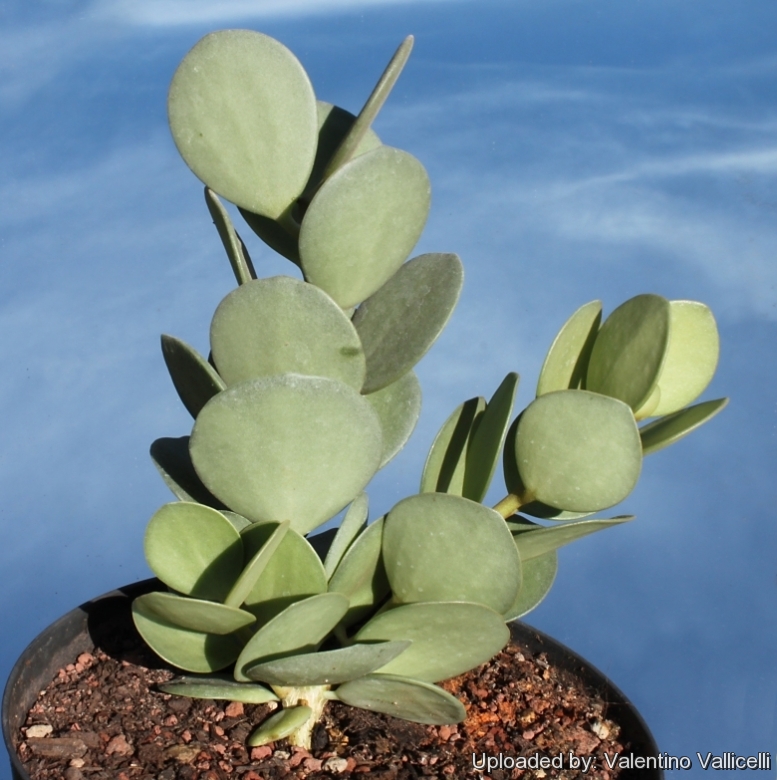
Origin and Habitat: Endemic to West and South-West Madagascar, Toliara.
Altitude: 0-1000 metres above sea level.
Habitat: It grows on subarid bushland forest and dunes and uses trees, as well as other means of vertical support, to climb up to the canopy to get access to well-lit areas of the forest.
Synonyms:
- Xerosicyos danguyi Humbert
ENGLISH: Dollar Vine, Penny plant, Silver dollar vine
Description: Xerosicyos danguyiSN|19003]]SN|19003]], commonly called the 'penny plant', is a really unusual climbing succulent with slender stems branching from the base. It bears peculiar silver-green to blue-green leaves that are almost a perfect round shape. The greenish-yellow flowers are known to be inconspicuous, but cute and neat.
Habit: It is a caudiciform shrubby leaf succulent, with tendril climbing liana-like stems to 5 m branching at base. If the plant finds no support, its shoots arch over.
Caudex: Plants grown from seed will form a caudex; plants grown from cuttings will not.
Branches: Erect or prostrate, slender, cylindrical. The cylindrical main stem will reach about 50 cm tall before it branches.
Leaves: Simple, distinctly succulent, obovate to almost round, 3,5–5,5 long and 2,5-5 cm broad, grey-green, silver-green or blue-green, glabrous. Margins entire. Leaves are flat on the upper surface and convex on the lower surface. Each leaf is located opposite to a long tendril. Petiole 0,8-1,5 cm long.
Tendrils: Tiny, forked branched.
Inflorescence: It produces numerous umbelliform fascicles or loose panicles in the leaf axils each with as many as 30 flowers.
Flowers: Greenish-yellow, inconspicuous (7 mm), not fleshy. Hypanthium obconical, 4 mm long. Petiole 3 long and 1 mm in diameter, glabrous. Pedicel 5-10 mm long. The plants are dioecious, and male and female flowers are on separate plants.
Blooming season: Early spring
Fruits: Obconical, 2 x 2 cm, dry, dehiscent, brownish-yellow.
Bibliography: Major references and further lectures
1) Urs Eggli “Illustrated Handbook of Succulent Plants: Dicotyledons” Springer, 2002
2) James Cullen, Sabina G. Knees, H. Suzanne Cubey “The European Garden Flora Flowering Plants: A Manual for the Identification of Plants Cultivated in Europe, Both Out-of-Doors and Under Glass” Cambridge University Press, 11/ago/2011
3) Werner Rauh “The Wonderful World of Succulents: Cultivation and Description of Selected Succulent Plants Other Than Cacti” Smithsonian Institution Press, 1984
4) Clive Innes “Complete Handbook of Cacti and Succulents” Van Nostrand Reinhold Company, 01/dic/1981
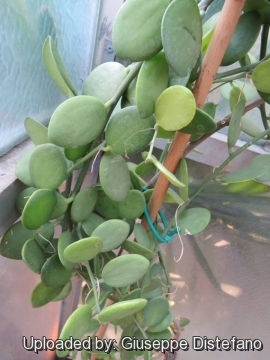
Xerosicyos danguyi Photo by: Giuseppe Distefano
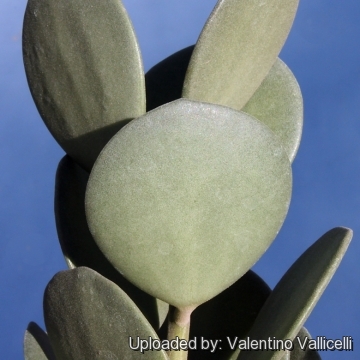
Xerosicyos danguyi Photo by: Valentino Vallicelli
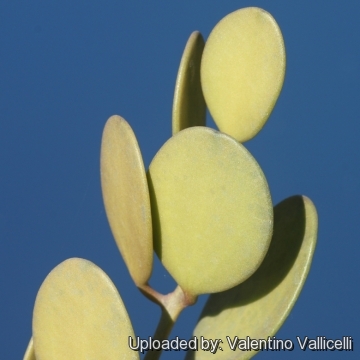
Xerosicyos danguyi Photo by: Valentino Vallicelli
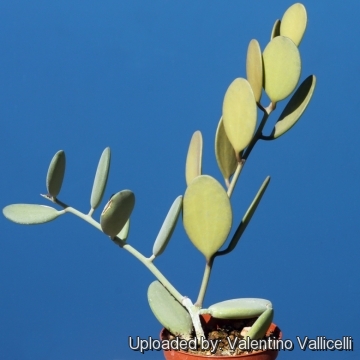
Xerosicyos danguyi Photo by: Valentino Vallicelli

Xerosicyos danguyi Photo by: Valentino Vallicelli

Xerosicyos danguyi Photo by: Valentino Vallicelli
Cultivation and Propagation: Xerosicyos danguyiSN|19003]]SN|19003]] is easy to grow and is drought tolerant. Needs to be planted next to something it can grow on or will look messy after a while. Its prolific dangling leafy branches grow well in all seasons, through growth is stunted during winter. It is quite happy in the hottest, driest spot in the garden. It can be overwintered outdoors only in frost-less climates. It can also be grown in hangings pots which allows its branches to cascade towards the ground.
Growth rate: Slow to moderate growth rate.
Soil: It adapts to most soil types, but not too heavy in texture; good drainage is desirable. If grown in a pot as an indoor plant use a succulent plants soil e.g.: 1 part peat moss to 1 part loam to 2 parts sand with small gravel added to increase drainage (sand must be substituted with pumice and lava grit).
Repotting: Repot in the spring, when their roots become cramped. Generally, they should be repotted every other year in order to provide fresh soil. After repotting, do not water for a week or more. Needs a large pot to accommodate a large root system.
Waterings: It is extremely drought tolerant. A deep soaking once a month in the summer will keep the plant looking good. For pot culture in summer, during the vegetative period, it must be regularly watered, but allowing the substratum to completely dry up before irrigating again (but do not overwater ); in winter, it’s to be kept dry. Preferable not to water on overcast days, humid days or cold winter days.
Fertilization: Low food needs. They should be fertilized only once during the active growing period.
Exposure: A location with full sun is best, although it can grow in partial shade, ensuring at least 4 hours of full sun per day.
Hardiness: USDA zones 9-11. During the winter months, the plants are kept at a temperature of around 5-9°C and are watered only enough to keep the leaves from shriveling.
Pest and diseases: Overwatering and poor drainage will damage or kill the plant.
Uses: It is suitable for small “desert” gardens, in association with other xerophytes. The plant's form and texture are compatible with other succulents and cacti. Where the open air cultivation is not possible due to the climate, it is to be cultivated in pot in order to shelter it in winter.
Propagation: It is easily propagated by cuttings or by seed in spring. Cuttings grow easily once left to callous for several days and then planted in succulent soil. Seeds germinate in 14-21 days at 21°C. Plants grown from seed will form a caudex; plants grown from cuttings will not.
| Your Actions | |
|---|---|
| Back to Xerosicyos index | |
| Back to Cucurbitaceae index | |
 |
Back to Succulents Encyclopedia index |
Privacy stantement - Terms and conditions - How to cite - About us - Feedback - Donate



